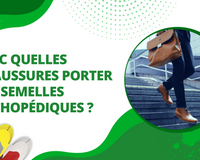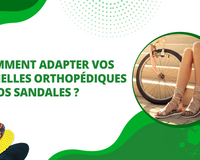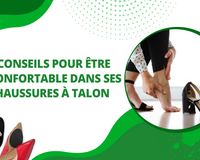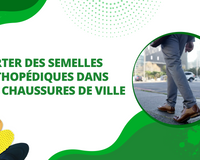Calcaneal spur is a type of plantar pathology caused by the calcaneus. This is the bone that forms the underside of the heel. The calcaneal spur has a very representative name, as it is in fact a veritable bone spur located under the heel. In fact, it's the calcaneus that has a bony outgrowth that can be very painful. It's a fairly common pathology, so there are many ways to treat it. treatment or, failing that relieve. In this article, you'll learn about the ten best solutions to combat heel spurs.
How is heel spur treated?
It's very important to know the difference between healing and relieving. Indeed, when we relieve heel spurs, the desired effect is to eliminate or reduce the pain caused by the condition. immediately. However, these techniques in no way improve the condition of the disease. The action of healing may not immediately relieve the heel spur (although in most solutions it does), but will aim to make the condition totally eliminated. These two methods are very different, and both are very important when treating heel spur.

How to relieve heel spur?
The symptoms of heel spur are powerful. It is a violent pain that radiates to the heel after a long period of foot rest, whether in the morning when you get up or after sitting for a long time. In reality, it's not the calcaneal spur that causes this pain, but the fascia, the fibre stretched between the calcaneus and the metatarsals (joint bones at the base of the toes). In fact, the appearance of a heel spur will inflame this tissue, also known as fascia, causing the appearance of a "heel spur". plantar fasciitis (or plantar fasciitis). As it is an inflammation, anti-inflammatory drugs and massage are generally used, although there are also other methodswe'll tell you about later.
How to cure heel spur?
Healing heel spurs is a complex process. The aim of healing heel spurs is to eliminate pain once and for all of this bone formation. Healing a heel spur (also known as Lenoir's spur) is almost never achieved by removing the growth. The only reason why removal of this growth is recommended is if all other solutions have failed. In this case, the heel spur patient will have to undergo the surgery. This solution is used as a last resort, as it is highly invasive (open surgery) and requires several weeks before returning to normal. What's more, even if the heel spur is removed, it can still grow back, since its formation is caused by the patient's activity.
What are the natural treatments for heel spurs?
Although standard treatments are very effective, it is also possible to opt for a natural treatment. Here are the five most effective natural treatments for heel spur, either to relieve it or heal it (or both):
Natural anti-inflammatories
Natural anti-inflammatories are in no way intended to cure heel spurs, but they can be very effective. Whether in your diet (herbs, spices, vegetables...) or in herbal teas and infusions, they are very useful and will blend in easily with your daily routine. Here's a list of the most effective natural anti-inflammatories:
- Turmeric ;
- Ginger ;
- Devil's claw ;
- Omega 3 (contained in vegetable oils and fatty fish, such as salmon);
- Chamomile (be careful, however, to choose the right type of chamomile).
There are, of course, other anti-inflammatories, so it's up to you to find out which ones are right for you.

Massage and physiotherapy
Massage and stretching are highly effective in treating heel spur. Rub a spiked ball on the sole of your foot and stretch, and you'll get a very good result, possibly even curing the condition. For more effective results, you can consult a physiotherapistwho will be able to massage and stretch you in the right places.
Acupuncture
This practice is one of the five pillars of traditional Chinese medicine. It involves the insertion of needles into the surface of the body at precise points. In this way, energy flows are released, which can have an anti-inflammatory effect. However, acupuncture does not appear to cure heel spur.
Temperature variations
As mentioned above, heel spurs lead to plantar fasciitis, the cause of much pain. As this is a inflammationit can be relieved by the hot or cold. In this way, the inflammation is soothed. Although in rare cases this can play a part in the healing process of heel spurs, most of the time it merely soothes the pain.
Losing weight and giving up sport
To alleviate and try to heal heel spurs, we need to go back to the source. This condition can be caused by overweightbut most of the time it's athletes especially runners. It is therefore recommended to stop all sporting activities to help the healing process.
What are the standard treatments for heel spurs?
Standard treatments are highly effective, whether for relieving pain or curing the condition. Here are the five most effective standard treatments for calcaneal spur:
Corticosteroids
More commonly known as cortisonecorticoids are natural anti-inflammatory hormones. They are a good (and very powerful) alternative to anti-inflammatory drugs.
Orthopedic insoles
This is undoubtedly the most frequently used solutionand for good reason. In fact, wearing orthopedic insoles for heel spurs has unprecedented results. It's simple: this method, combined with the cessation of sporting activities, is the most effective of all for curing this pathology.

Anti-inflammatory drugs
As you can imagine, anti-inflammatory drugs are designed to relieve the disease. Unfortunately, although they are highly effective, they can impair healing of plantar fasciitis.
Shock waves
The shockwave therapy is carried out by the physiotherapist, and can therefore be used in conjunction with the massages mentioned above. This is a formidable method for definitive treatment of heel spur.

Surgery
If none of these treatments work and you are still in pain, then it may be necessary to surgeryto remove the thorn in question.
How long does it take to heal a heel spur?
In general, this plantar pathology can be treated in the space of a few monthsif treated basically. However, it is possible to it can easily recur. To avoid this, you can wear orthopedic insertsbut treatment will take longer.










